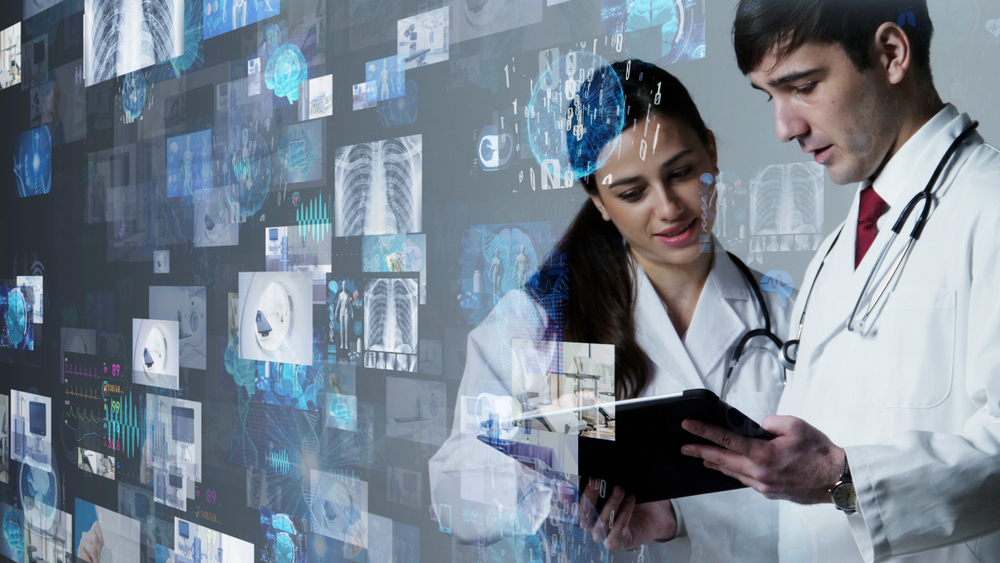
Head of Global Artificial Intelligence Engineering
Siemens Healthineers Ultrasound
Siemens Healthineers background
Siemens Healthineers builds healthcare products and is one of the 5 largest med-tech companies in the world. It split off from its parent company, Siemens, about two years ago. They predict that in the future
- Medicine will be more precise and affordable.
- Value will be at the heart of care delivery.
- Patients will be treated as consumers.
- Healthcare will become digital.
The company helps enable healthcare providers to increase value by:
- Expanding precision medicine
- Transforming care delivery
- Improving patient experience
- Digitizing healthcare
Siemens Healthineers main goal (and motto):
- Enabling better outcomes and lower costs
Problems currently faced by the healthcare industry:
- Diagnostic and treatment programs are often a one-size-fits-all model. Hence the need for going for more personalized and precision medicine.
- Health systems are fragmented, resulting in low productivity and availability across all care.
- Patients are not actively engaged in their healthcare.
- Fragmented information is used from silo data pools.
What healthcare providers need:
- Low-cost preventive care
- Fast patient throughput
- Fast, accurate diagnosis
- Precision and personalized treatment
Solution: AI-powered automation.
How Siemens Healthineers works with AI
Siemens has partnered with several healthcare institutions around the world to curate and gather data sets. The company has more than 30 AI-enriched offerings, over 400 patents in machine learning and 100 patents in deep learning.
AI is based on a hierarchy of four levels of data consumption:
- Scanner/instrument (bottom of the hierarchy)
- Reading/reporting guidance
- Patient centric
- Patient cohort (top of the hierarchy).
The complexity increases as the levels rise.
AI-supported systems are broken up into five levels:
- General assistance
- Partial automation -- current technology
- Conditional automation -- current technology
- High automation -- future technology
- Full automation -- future technology
An example of a conditional automation solution:
- A CT scanner that automatically adjusts to an individual situation: a fully assisted scanner technology (F.A.S.T.) integrated workflow with a unique, F.A.S.T 3D camera.
An example of a high-automation system:
- AI-RAD companion platform, which seamlessly integrates into the hospital environment and workflows. Compatible with systems across all vendors.
AI solutions for ultrasound imaging:
- Improve workflow and reproducibility in one click.
- Easy measurement
- Information can now be used in preoperative environments. Example: a 3D printout of a patient’s heart valve.
Siemens AI-powered product: eSie Measure
AI-powered to increase efficiency and exam quality with less measurement variability and repetitive stress.
- 30% few hand movements
- 27% less measurement variability
- Improves reproducibility and efficiency with 1-3 beat measurements in one click.
Benefits:
- Machine will not be affected by fatigue, focus, or distraction.
- Saving keystrokes and dedicated time.
Where AI will have the most impact: chipping away at small, mundane tasks. Ultrasound is one of the most tedious modalities there is for using and producing the right images. AI will help eliminate the tediousness of an ultrasound exam.
A glimpse into the future: the digital twin
Digital twin is a lifelong, personalized, physiological model updated with each scam and/or exam: collecting genetic history, health and eating habits. All of this information is fed into a computer that builds a model of your heart. The model is updated as changes to your life occur (including aging). The model can be used to predict what may happen to your heart in the long run.
Siemens Healthineers want to be able to predict disease before it occurs.
Bottom line: AI used in healthcare imaging benefits:
- Technology driving efficiency and productivity
- AI-driven outcomes that matter to patients
- Software agents that help expand precision medicine
 BACK
BACK

